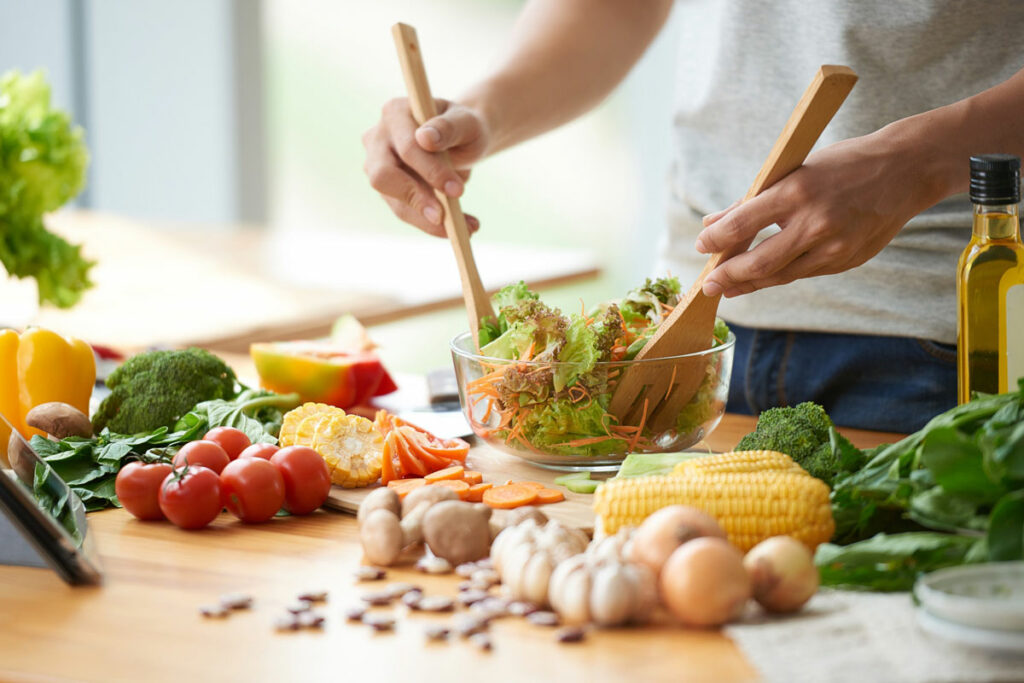India is the paradise for food boasting of not just one or two but about as many cuisines as the number of communities. As you move down from Northern India to Southern India or traverse from Western India to Eastern India, you will note a complete change in the regional cuisines. Every zone is special in its way and cooking style and its essence lies in its rich historical heritage.
With such diversity of foods available around us, it also becomes especially important to know how a particular food item has an impact on our body by thoroughly noting down the number of calories it imparts as now the world is increasingly becoming aware of healthy food habits and its impact on our daily lives.
Cuisines of India can be categorized into North Indian, East Indian, South Indian and West Indian for simplicity. But that is a simplistic categorization, for even within every state in India, one finds great culinary variation. Each region has its unique culinary dishes. The food of any region takes you on a gastronomic journey of the country.
So let’s begin with our hunt, shall we?
North Indian Cuisine
It is largely influenced by the Mughals & hence bears much similarity to the central Asian style of cooking. One of the striking features of North Indian cuisine is profuse use of butter-based curries and dehydrated fruits and nuts. Abundant oil, ghee, and butter along with rich spices are generally used while cooking which lend its food a very strong aroma & flavour in addition to a high amount of calories.
Contrary to the southern and eastern part where rice is the staple food, North India lives on Rotis, Chappatis, Paronthas and Tandoori all made from wheat having 100 calories in a piece for plain & 300 in stuffed variants. Lassi, a beverage made from curd has an overwhelming taste with just 32 calories in a glass. It is low in fat and helps in digestion while being rich in potassium, calcium, phosphorus and Vitamin B12.
Gulab Jamun (323 kcal/100g) & Motichur Laddoo (240 Kcal/100g) are popular sweets in this region. In north Indian cuisine, meat also holds a very special place. A variety of Kebabs (159 Kcal/100g) and Biriyanis (a tantalizing marinade of rice and meat; 130 Kcal/100g) bear the Mughal legacy. Some interesting North Indian dishes are Reshmi Kabab, Seekh Kabab, and Shammi Kabab, Kashmiri Pulao, Tandoori Chicken and Mutton to name only a few.
South Indian Cuisine
Being highly popular in parts of India other than the origin, most will reply ‘South Indian’ when asked for which other Indian cuisines they would prefer for a change. It is truly a vegetarian’s delight. Coconut oil, a striking feature in South Indian cuisine lends the food a very special flavour and boosts one’s level of good cholesterol & aids in digestion. In most of the delicacies, coconut having 354 calories per 100 grams is also used profusely. Rice is staple food here. Idli, Dosa, Vadas and Uttapams, made from rice ground with lentil, are popular South Indian specialities, mostly in Tamil Nadu. A famous South Indian dish, Rasam prepared by different flavours from several Indian spices has 60 calories in a small bowl. Spicy, oily and aromatic chutney and cuisine is a speciality of Tamil Nadu. In the Malabar coasts, like Kerala, they make fantastic delicacies of sea fish including crab (87 Kcal/100g) and prawn (115 Kcal/100g) holding the strong aroma of spices.
East Indian Cuisine
Contrary to the northern side where wheat is dominant, rice serves as an integral part of any meal in Eastern India. Along with that, fish is also a favourite item of the people of Eastern India of which a wide variety of dishes are prepared. Mostly available during the monsoons, Hilsa (99kcal/100g) being the most popular fish is famous for its unforgettable taste. Several delicacies are made of Hilsa, and also from Rohu, Vetki etc, which are sure to tickle your taste bud. Sweets hold a very special place in Eastern Indian Cuisine like in West Bengal; Rasgulla (186 Kcal/100 g) is a fantastic delicacy that has earned global acclaim.
West Indian Cuisine
Geographical heterogeneity has contributed to the versatility of cuisine in the western part of India as it is an admixture of several races and traditions. There are Parsi influences in its cuisine, especially in Mumbai and Gujarat regions. Vegetarian dishes like Pav Bhajis (200 Kcal/100g), Bhel puris (140 Kcal/100g) and Dhoklas (160 Kcal/100g) are gourmet’s delight here. Due to the concentration of the Jains in Gujarat, the state excels in vegetarian cuisine with the subtle use of spices and rich texture. In the coastal areas of Maharashtra and Goa, preparations of sea fish marinated in tantalizing spices are sure to tickle your taste buds. Goa with its signature Portuguese influence has especially won the heart of food lover through the stomach with the exotic seafoods including crab and prawn. The food of Rajasthan is rich in spices. But if you can brave a little spicy affair, you may be able to enjoy the Rajasthani cuisine.
India is proud to serve the most diverse cuisine in the whole world. So, as you move from one region to the other, you’ll be welcomed with a new platter, with new food items on it. No particular cuisine in India can beat the other with regards to rank in the order of taste appeal. Each has its special powers to make you want for more. This indicates that wherever you choose to land in India, a delicacy awaits you!

